

1. Introduction
The triangle-based structure of the Bible's eight opening Hebrew words (here referred to as Genesis 1:1+ - comprising the first verse and first word of the second) has hitherto largely involved a consideration of the sums of unbroken sequences of their characteristic values (CVs) - these latter determined by the scheme of alphabetic numeration instituted circa 200 BC into Jewish society. In this page attention is switched to the differences associated with these CVs. As we shall find, they too reveal triangularity, but of a kind that - though completely independent of the former - is no less remarkable, being essentially based upon a rare event in the triangle series, viz. two integers, one the double of the other, both triangles.
At the same time we shall examine afresh the extraordinary relationship that exists between these triangles, the Hebrew words from which they derive, and the metric dimensions of an abundant modern artefact - the A4 sheet of cut paper. Further, we shall attempt to assign a probability to this train of coincidences.
As we have already seen, the words themselves (read from right to left) are as follows:
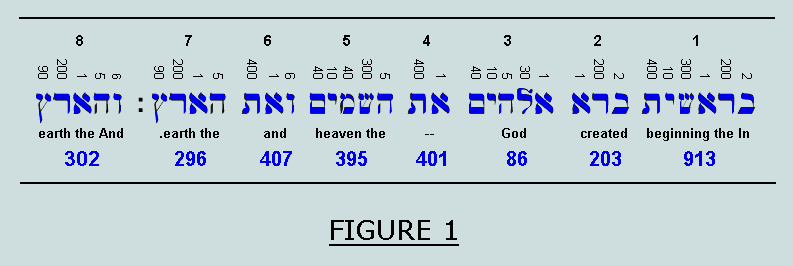
(Those unacquainted with the Hebrew scheme of alphabetic numeration may find the details here
The numbers represented by the Hebrew letters (their 'characteristic values', or CVs) appear above the words and their totals (the word CVs) below.
Thus, at the very portal of the Judeo-Christian Scriptures we find the following sequence of 8 natural numbers:
G = { 913, 203, 86, 401, 395, 407, 296, 302 }
Our investigation first requires the derivation of their differences; these expressed as a set of 28 numbered positive integers.
2. The CV differences
Here are the details:
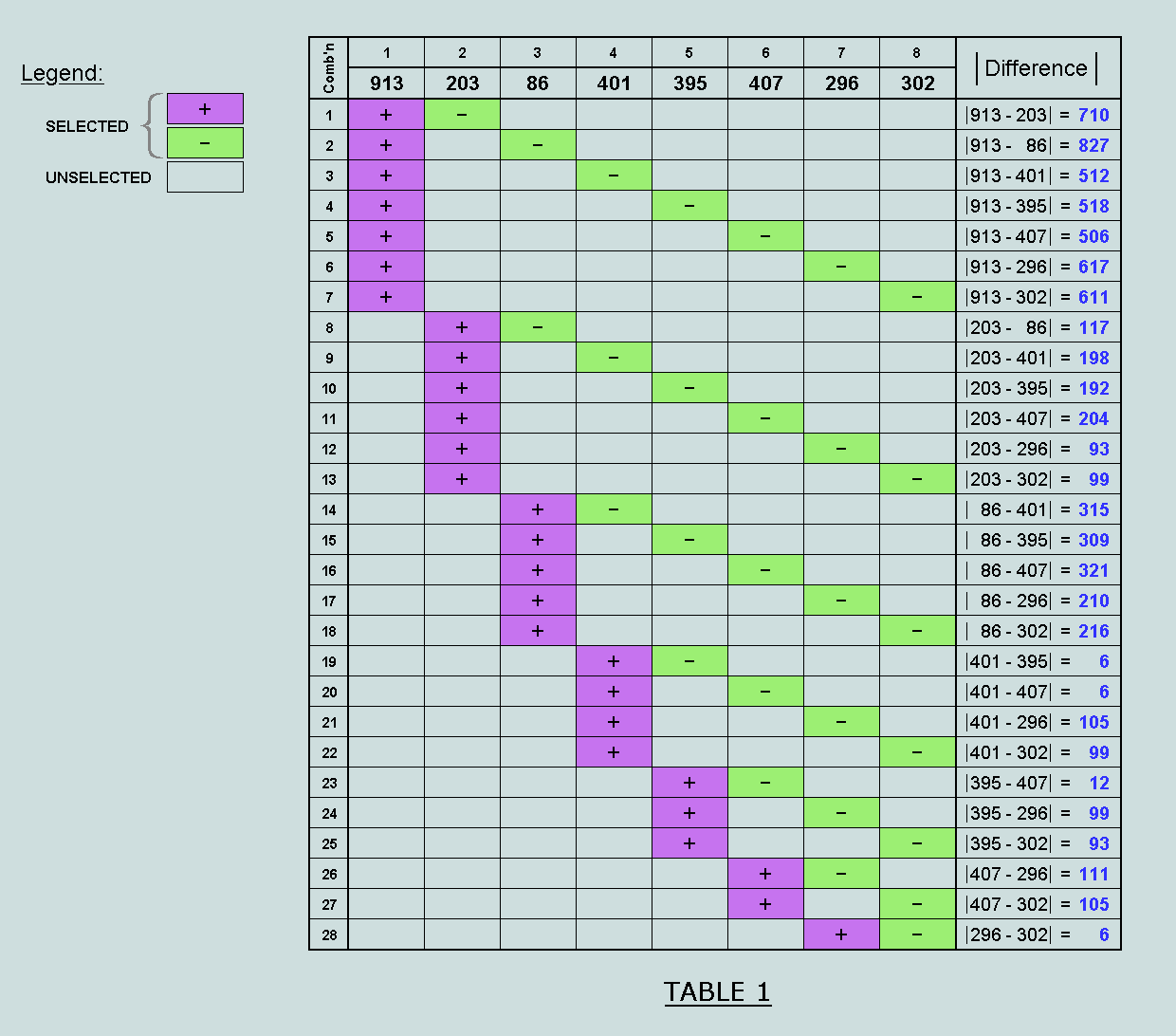
Surprisingly, these differences are not independent - as Tables 2(a) and 2(b) reveal:
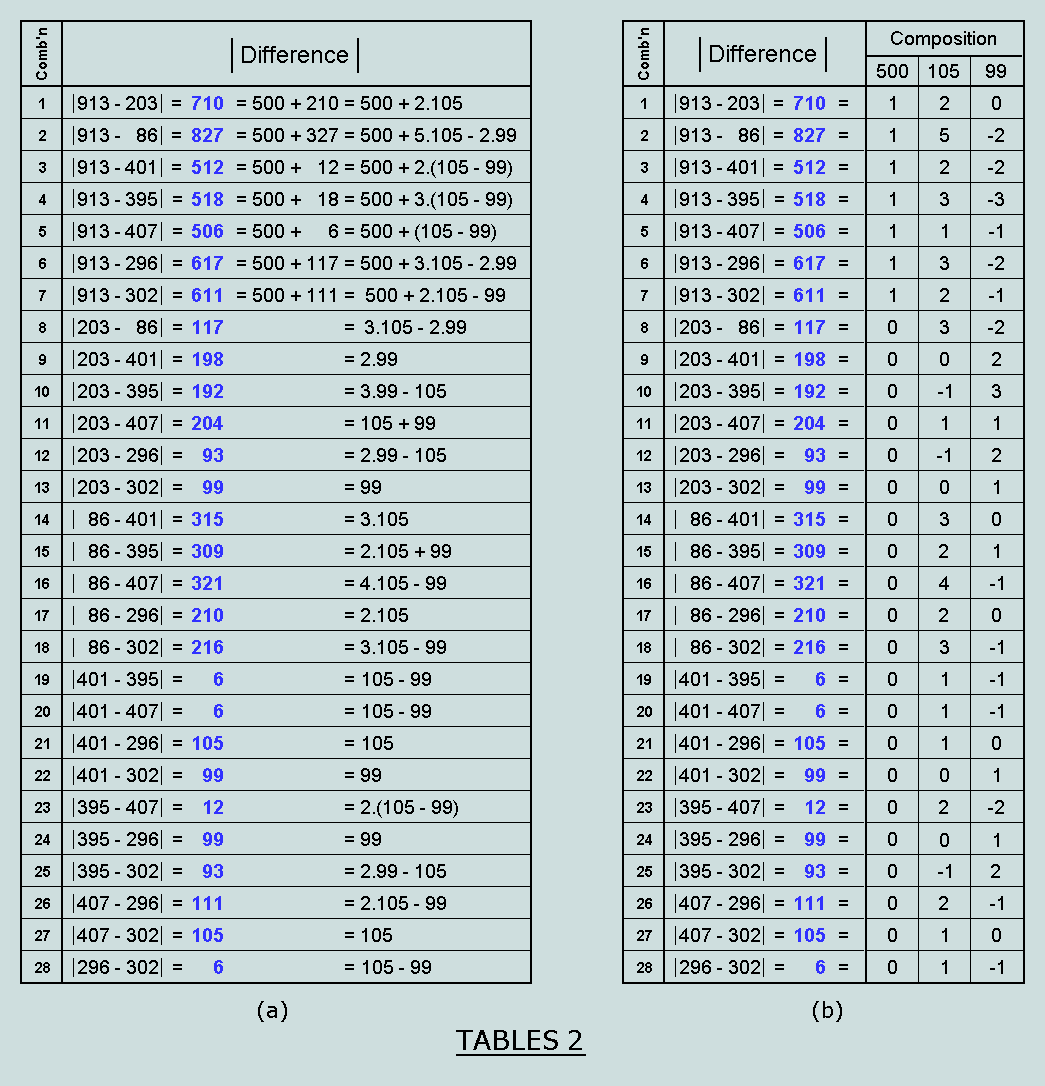
At (a), we observe that if the differences associated with the first CV, 913, be excluded, each may be simply expressed in terms of the two parameters, 105 and 99; further, that the whole set is accomodated when a third parameter, 500, is introduced. These matters are clarified at (b) where the associated collection of small integer multipliers is revealed.
But what is doubly remarkable is that 3 of the CVs themselves may be obtained by differencing the same three parameters, thus:
395 = 500 - 105; 401 = 500 - 99; and 296 = 500 - 105 - 99
Thus - the differences between the 8 CVs being already known - the whole set may be expressed in an equally straightforward manner, and a representative formula derived (Table 3).
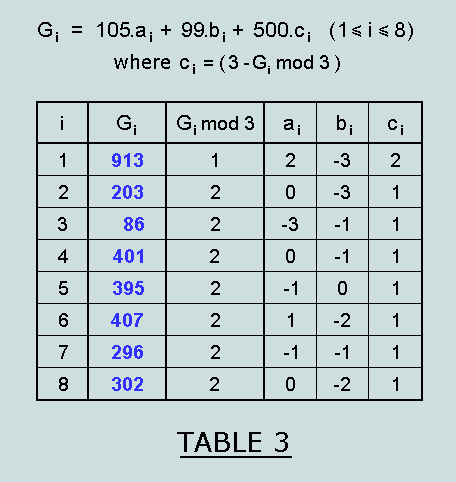
Observe that CVs 2 to 8, inclusive, each yield the remainder 2 when divided by 3 (the meaning of the heading 'Gi mod 3'), whereas the CV of the Bible's first word yields 1. The inference is that in what follows 913 stands aloof from the following 7.
3. A geometric basis for these findings
As Figures 2 and 3 reveal, these features of Genesis 1:1+ are based upon substantial triangular foundations. The first is particularly noteworthy in that it exemplifies a rare event in the triangle series, viz both 105 and its double, 210, are represented.
[Note: there are just 6 occurrences of this phenomenon in the first billion natural numbers - details here Blueprint 6].
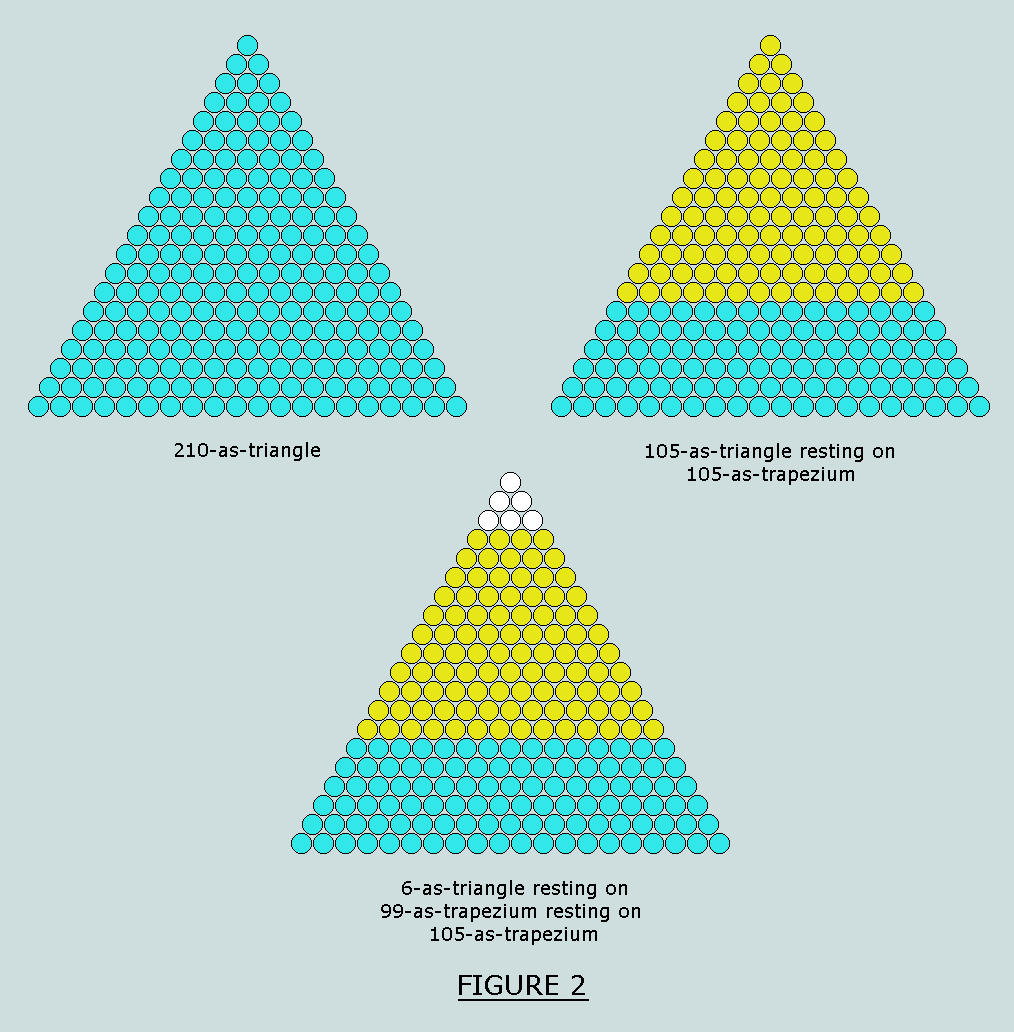
Observing that 6 is the first perfect number, and 28 the second, we uncover a positive link with Figure 3:
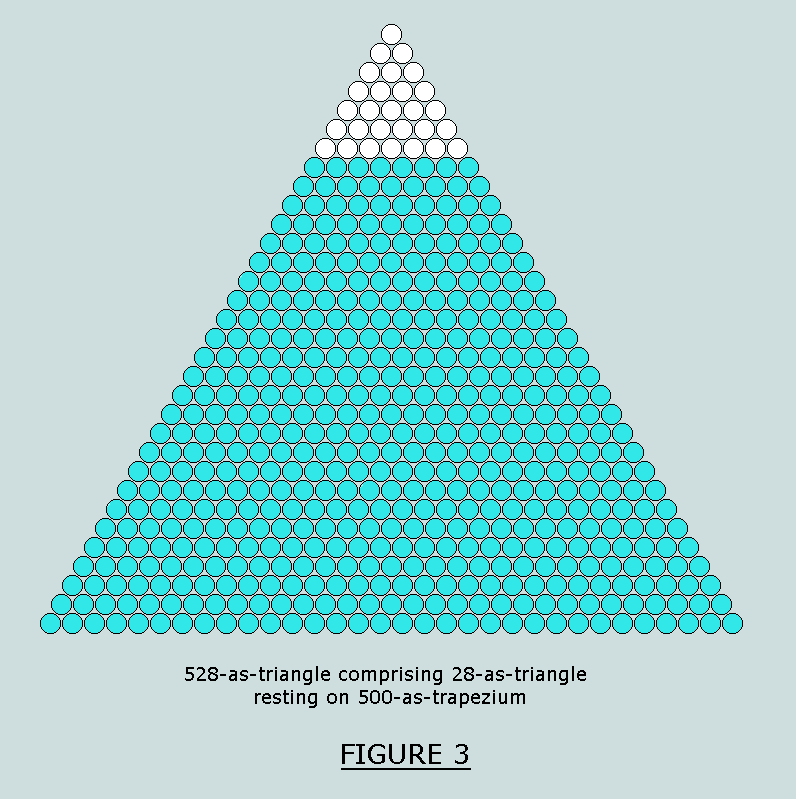
4. The Genesis 1:1+ CVs as a set of potentials
Based upon the earlier analysis, a spatial representation of the Bible's opening words now becomes possible. Following standard procedure, we may profitably associate Genesis word CVs 2 to 8, inclusive, with what we may conveniently refer to as the potentials existing at points drawn in a horizontal plane - these spaced according to the potential differences established earlier, thus:
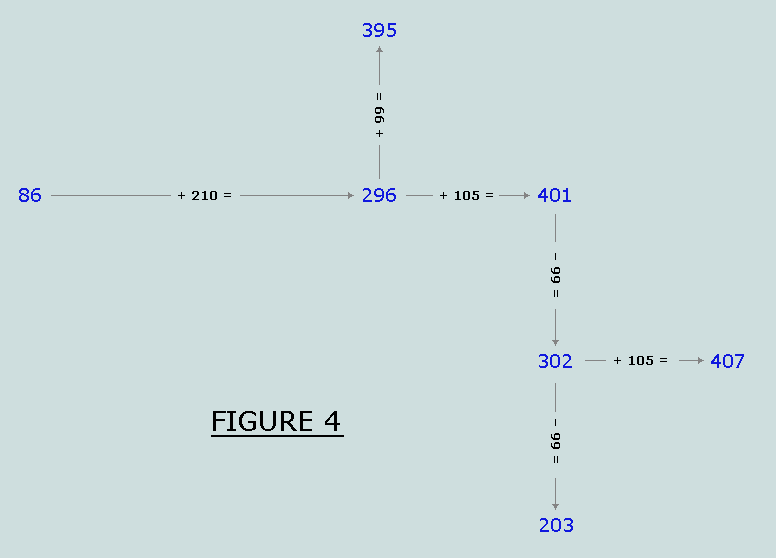
Here we become aware again of the highly significant fact that these opening word CVs are not independent! Further, we note that each of the seven is 2 more than a multiple of 3. Clearly, the step of 210 units that converts 86 to 296 may be replaced by two of 105, thus:
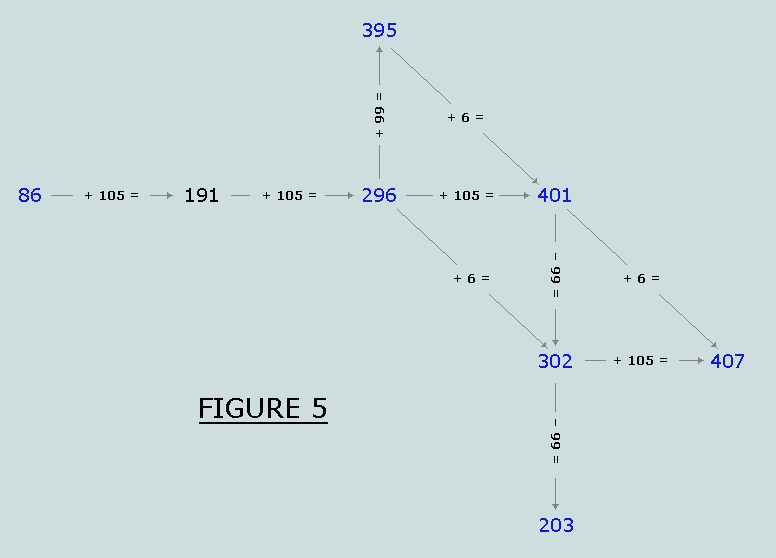
The intermediate value, 191, now enters the picture - but plays no significant role. Clearly, apart from the 7 Genesis CVs themselves, the principal numerical components of these constructions are the triangular numbers 6, 105 and 210, and the trapezium 99 (= the difference 105 - 6) - all multiples of 3.
5. Introducing the Genesis Lattice
The suggestion is that these CVs are features of an infinite lattice that resides in a horizontal plane, comprising straight lines parallel to the x- and the y- axes - respectively spaced 99 and 105 units apart (Figure 6).
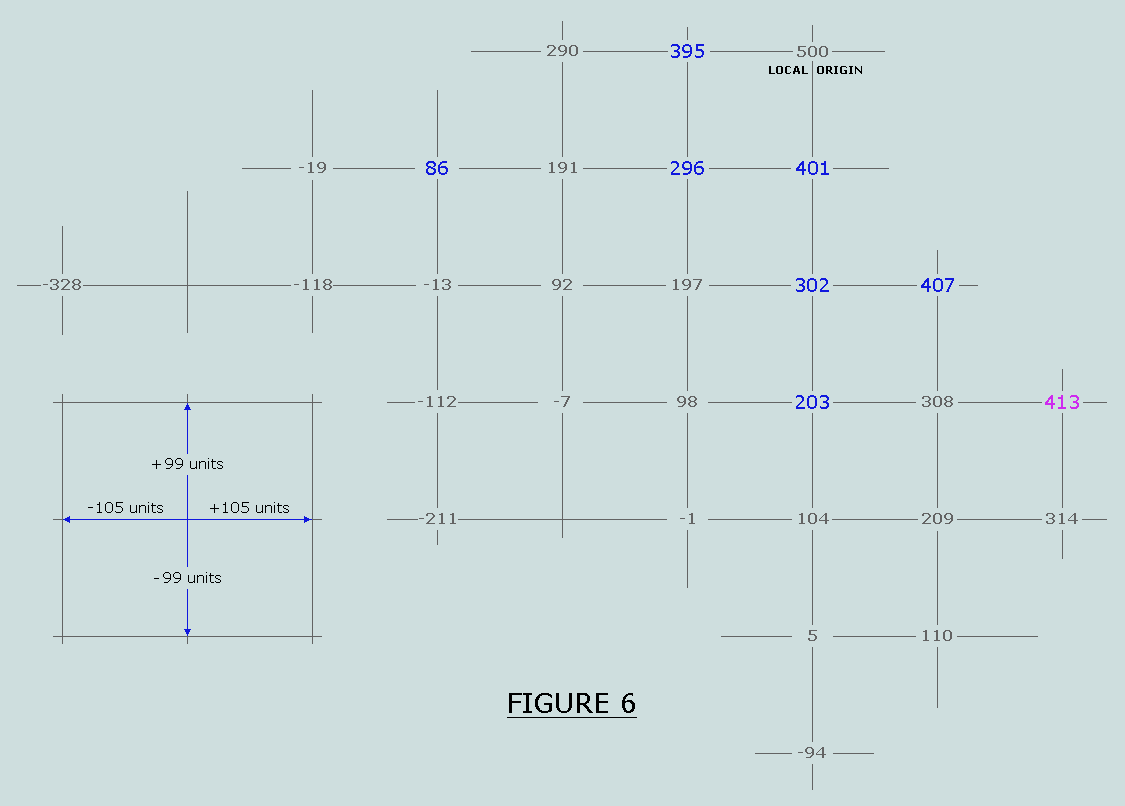
Here, the numbers of immediate interest appear in blue - and their companions in black. Observe that 500 units above the red entry we find 913 - the 'missing CV' associated with the Bible's first Hebrew word. Clearly, this representation of what we may appropriately refer to as a region of integer space requires that there be a total of 3 parallel planes, spaced at intervals of 500 units.
Figure 7(a) illustrates the unit cuboid which represents the basic element of construction of this 3-D lattice - a small portion of which is depicted at (b). It is at the vertices of these cuboids - and nowhere else - that the potentials defining integer space are located.
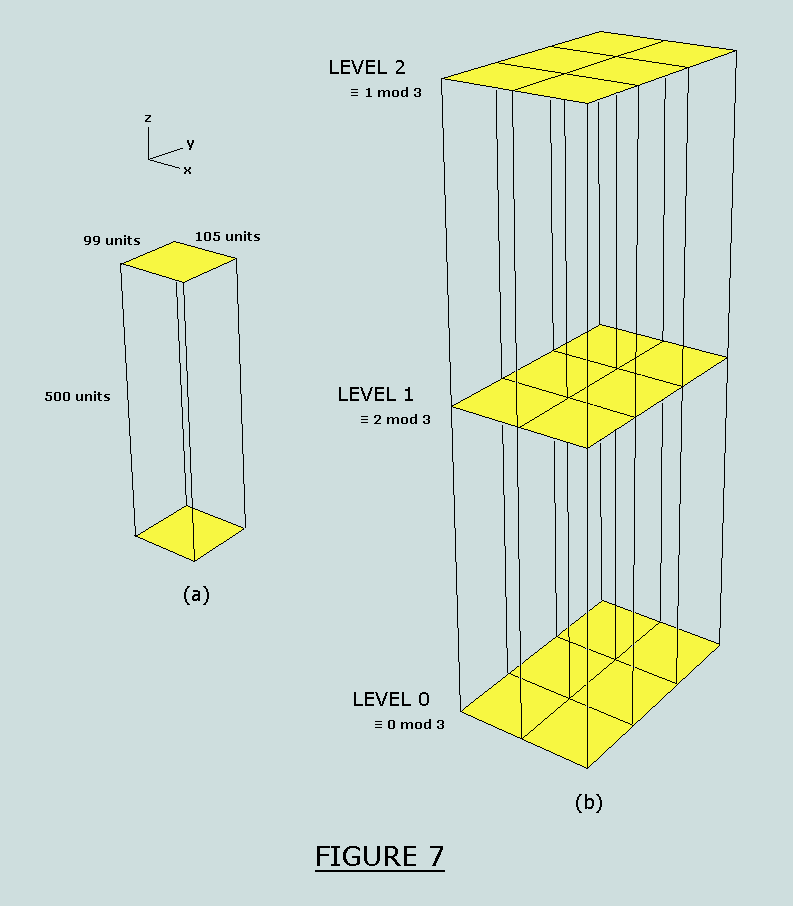
Observe that the yellow bases and caps of these cuboids lie in these contiguous planes - the lowest containing all integers of the form '0 mod 3', the central, all of the form '2 mod 3' and the uppermost, all of the form '1 mod 3'. It is in the central plane that Genesis CVs 2 to 8 appear as a cluster centred closely on the local origin.
6. The 'doubles' - close companions of 913
Directly above this cluster is another - each member of which having a potential 500 units more than its lower counterpart. Observe that 913 - the CV of the Bible's first Hebrew word - lies on the right-hand edge of this pack, and is therefore part of it.
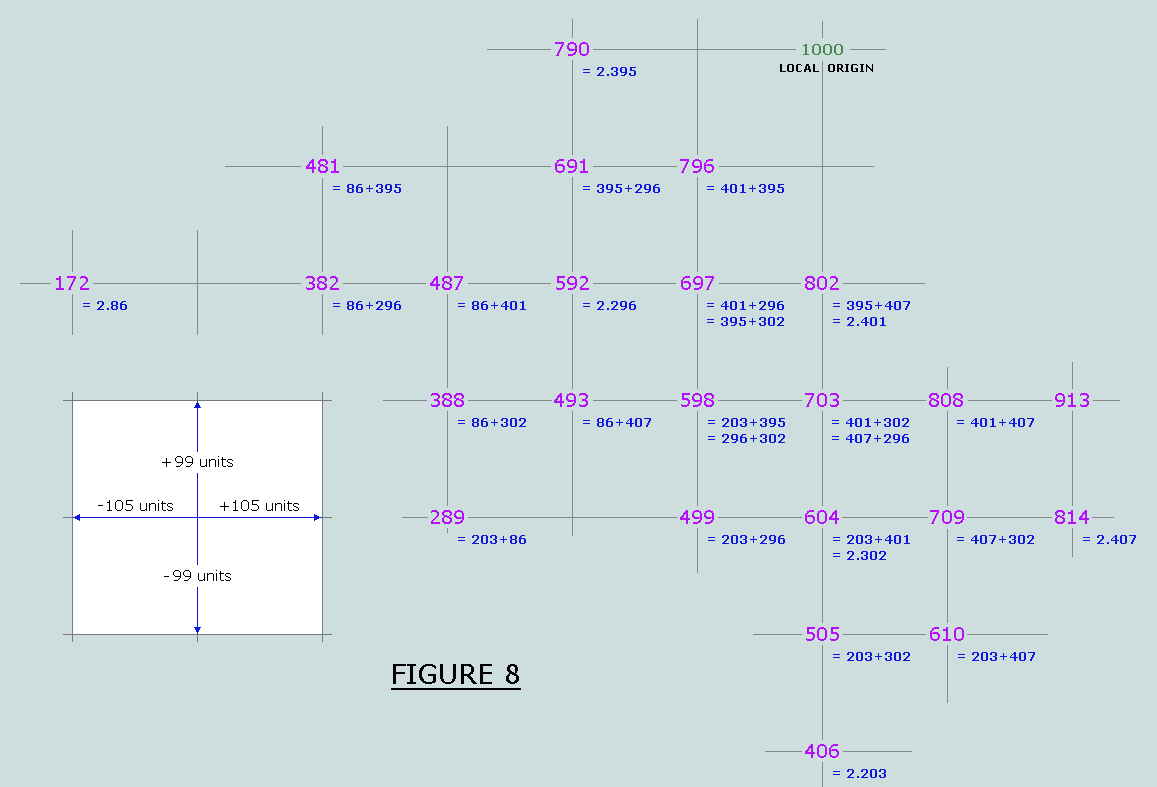
Remarkably, each component of this cluster (apart from 913) make be expressed as the sum of 2 of the values below and, occasionally, as either one of two alternatives. However, it must not be assumed that this feature belongs uniquely to the Genesis 1:1+ CVs; it is, rather, a feature of the lattice structure (which, of course, has been derived from a close consideration of the Genesis+ differences!)
7. Infinite repetition within the lattice
The observant reader will have spotted a further interesting feature of this triple-plane lattice: every integer is accomodated an infinite number of times! This, because 35 increments of 99 are balanced by 33 decrements of 105, and vice versa. A summary of this fact is provided in Figure 9 where the Genesis 1:1+ clusters are represented as extended pink rectangles.
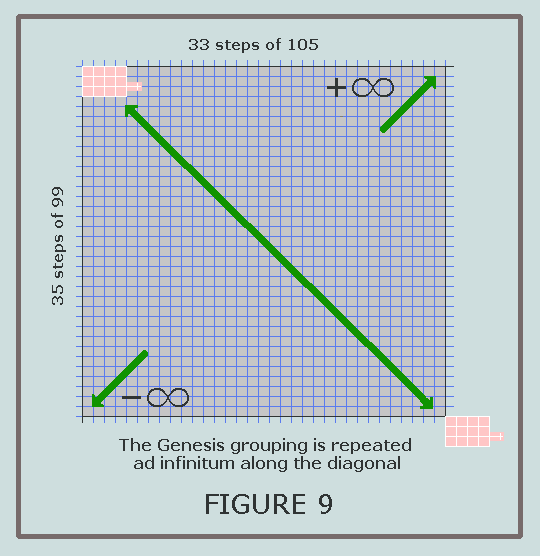
8. The A4 connection
Recommended as an international standard by ISO in 1961, the A-series of cut paper sizes is now well-established in many countries. It is based upon a rectangle (A0) having an area of one square metre and sides in the ratio 'square-root of two to one'. These proportions are automatically conferred upon its progeny - A1, A2, A3, and so on - by the simple process of halving. All dimensions are expressed to the nearest whole number of millimetres.
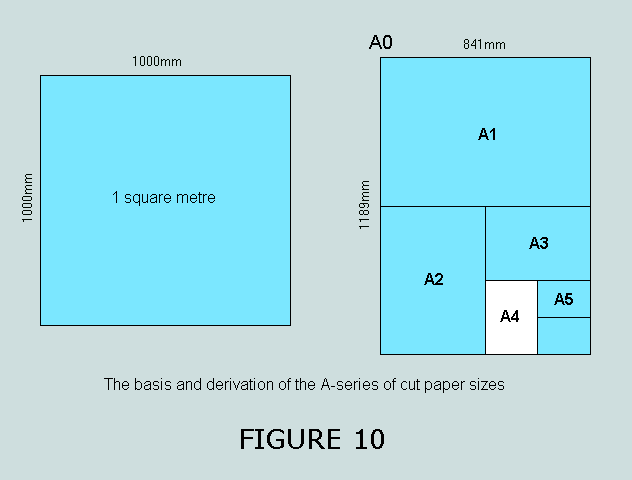
Its best-known representative is A4 - currently the most popular medium for recording and communicating the written word. This is nominally 297mm x 210mm and represents an area of one sixteenth of a square metre. It may be subdivided into 6 equal parts - each of dimension 105mm x 99mm.
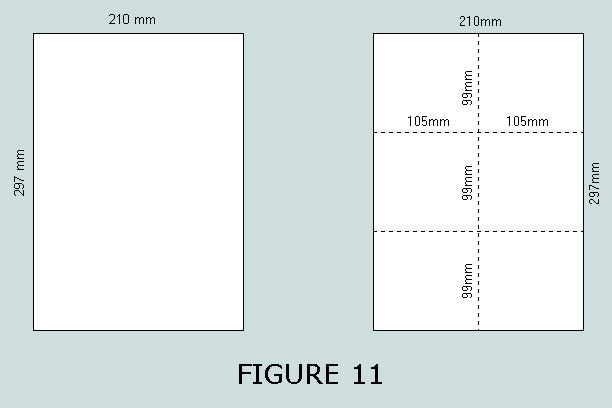
Remarkably, we see the Genesis 1:1+ parameters revealed in the partitioned sheet - which, incidentally, forms the cap of Figure 7!
Proceed here to learn how the features of Table 3 may be developed from a single A4 sheet placed in contact with a metre ruler graduated in millimetres.
9. An alternative parametric representation of Genesis 1:1+
Figure 11 reveals that the nominal length of A4 is 297mm - and therefore numerically 1 more than 296, the CV of the Bible's 7th Hebrew word. Earlier (Figure 4), we saw that this was 210 units more than 86, CV of the Bible's 3rd word - and therefore numerically identical to the nominal width of an A4 sheet. These features enable us to derive Table 4 - an alternative representative formula along with its associated table of small integers, thus:
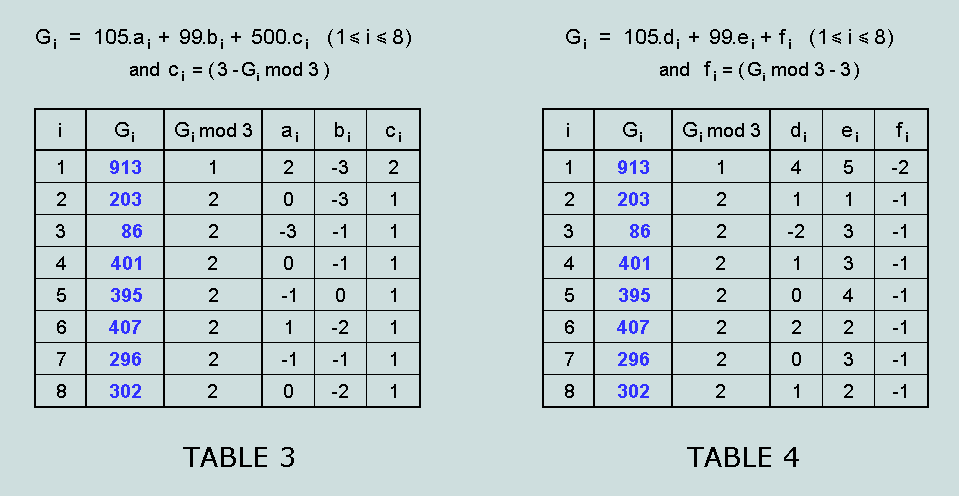
Observe that this is completely independent of the repeated Table 3!
10. Conclusion
What is the probability of blind chance delivering such a rich confluence of interesting properties involving, as we have seen, (1) the first of the 31,102 verses of a Book that claims to be the Inspired word of God, (2) a rare event in the annals of numerical geometry, (3) the metric dimensions of an abundant modern artefact, and (4) two independent proofs that the numerical values of the Bible's 8 opening words of Hebrew are closely interrelated? One might fairly claim that the supernatural origin of these wonders has already been established beyond reasonable doubt in earlier pages. However, the nature of these findings lends itself to a quantitative evaluation - two key features being the clustering of the Genesis 1:1+ set in the lattice and its proximity to the local origin.
In a Visual Basic simulation involving the generation of a billion random sets of 8 integers (2 Mod 3) over the range 2 to 998, no set was found to compare with Genesis 1:1+. And this, surely, is hardly surprising!
I therefore claim the foregoing to be clear proof of non-biological intelligent design - a carefully planned and executed example of divine intrusion into human affairs in our day; a standing miracle that resides in the opening words of the world's best-selling Book!
Vernon Jenkins MSc
2008/10/26
* In physics, the potential at a point refers to a quantity determining the energy of mass in a gravitational field or of charge in an electric field. In the present context, by analogy, potential refers to the cumulative distance traversed from some reference point to the lattice node in question; this distance typically expressed in millimetres.